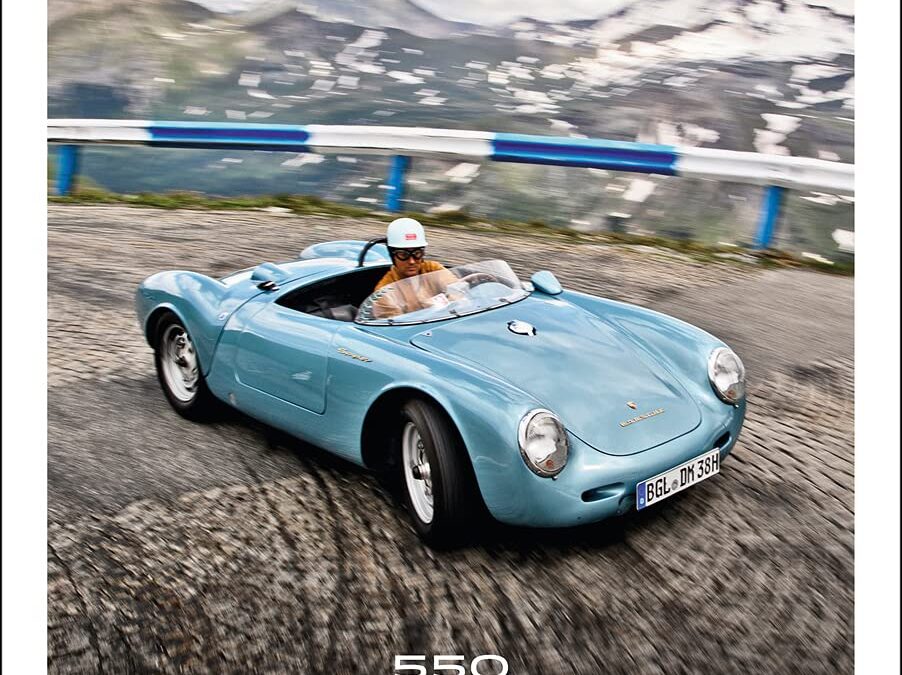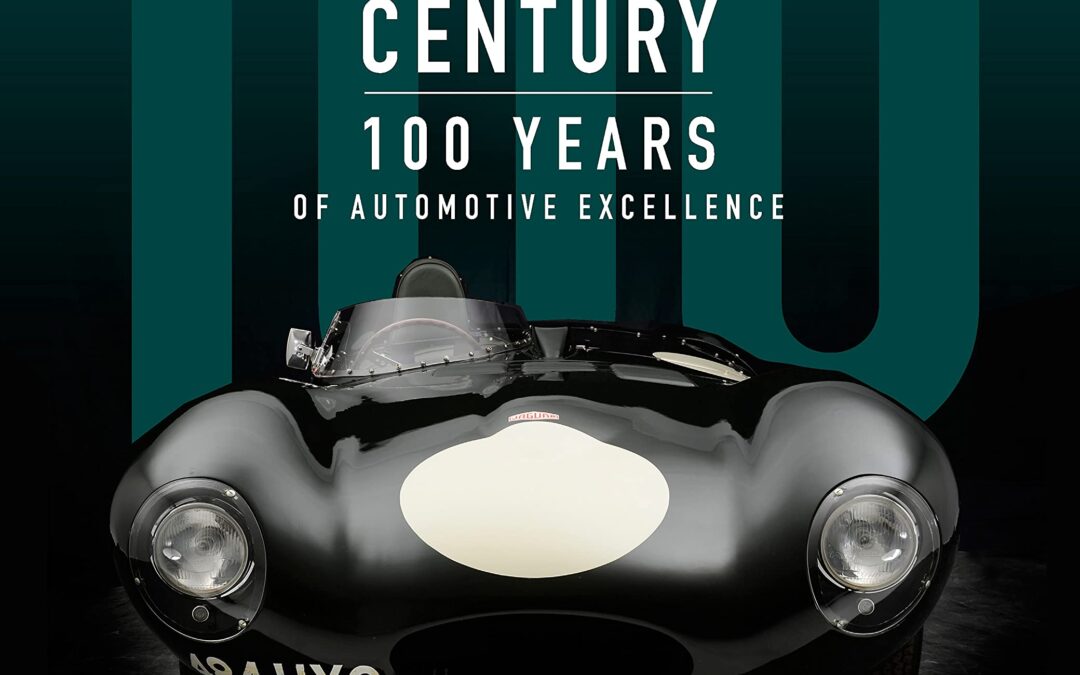
“Only 500 men will ever drive it”
This was the slogan that Porsche chose to advertise its new elite model, which, under the name Carrera RS, was supposed to change the course of history. The first 911 Carrera RS was a true stroke of genius on the part of Porsche: The car, only 500 units of which actually needed to be built for homologation purposes and which originally left the sales department far from convinced, turned into an unexpected sales hit. Within a very short time, the Carrera RS cemented its status as the dream car par excellence for sports car fans. Although the original, somewhat naive idea had been to only produce five hundred of these cars, in the end more than three times that number were made and sold. In the summer of 1973, production ended after 1,580 units had been made.
The new Carrera RS of the 964 generation became a worthy successor to the legend. Nevertheless, it took a full 18 years before the legitimate successor to the Carrera RS 2.7 was presented. Legendary Porsche racing engineer Roland Kussmaul tells us why it took so long in an exclusive interview.
The new Carrera RS of the 964 generation became the legitimate successor to the legend. The 964 RS needed no more than 260 hp to reach a top speed of 260 km/h. Again, more than twice as many vehicles as actually required were sold within a very short time.
The Porsche 993 RS became the last classic Carrera RS. The last classic 911 RS was presented in January 1995 . As far as many fans of the ‘Eleven were concerned, its attractive design crowned the 911 RS of the 993 generation as the most beautiful Carrera RS of all time. In this last air-cooled 911 RS, the engineers achieved a particularly harmonious synthesis of sportiness and comfort.
The Carrera RS book for the 50th birthday! The time has come to dedicate a book to the classic, air-cooled series of the 911-RS. In addition to detailed buying advice and price developments over the past few years, the book also includes an extensive technical and statistical section.
Limited edition of 500 copies
English & German text
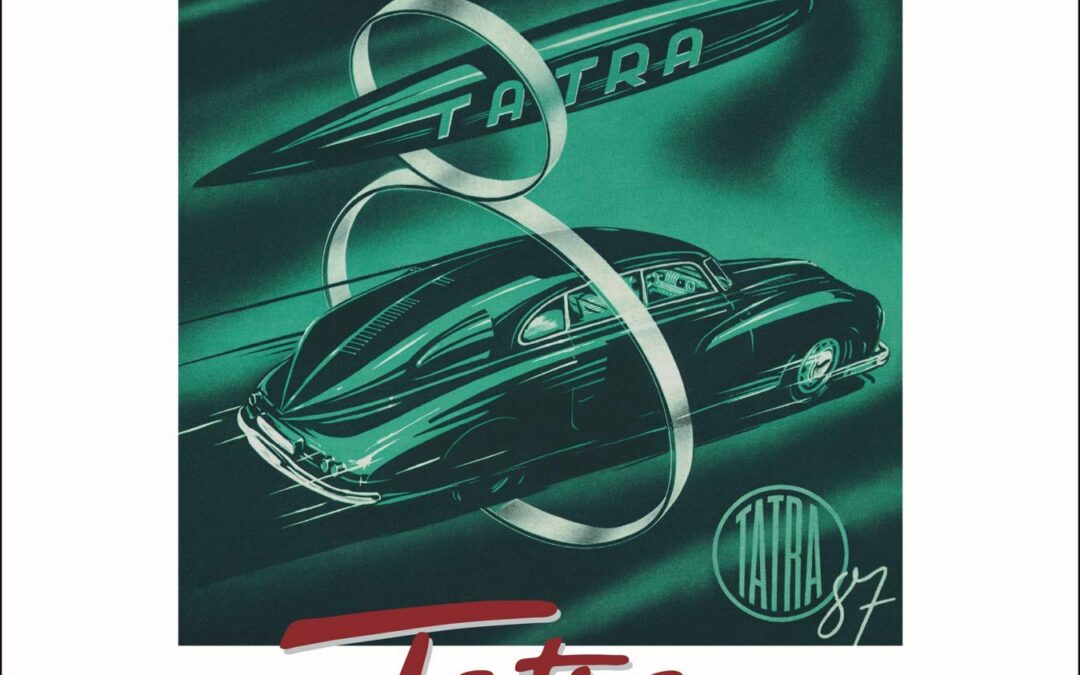
Tatra – The Legacy of Hans Ledwinka is the story of the Tatra company, which originated in the Central European country of Czechoslovakia. It is a tale of great innovation and avant-garde design in automobile engineering. It is also the story of one man – Hans Ledwinka – and his visionary concepts which have become highly influential, although often undervalued, contributions to the development of car technology.
Until now, Hans Ledwinka’s talent has hardly been recognised; in retrospect, he can be judged equal to car designers such as Benz, Daimler and Porsche, whose endeavours have been fully recorded many times over. With his revolutionary Tatra cars, Ledwinka consistently pushed back the frontiers of automobile construction, and it’s certain that without his inspiration, the Volkswagen in its air-cooled rear-engined form would perhaps never have been conceived. This book suggests that Ledwinka played a greater part in this development than has previously been appreciated.
The authors have covered the full history of the Tatra company, which is one of the oldest factories in continuous automobile manufacture, dating back to the 19th century. By doing this, they have placed both Ledwinka and the Czechoslovak Tatra company in their rightful place in the history of car design, and provided a fully comprehensive assessment of the influence of Tatra car designs and their inspired creator.
The text of this larger format 2nd edition has been fully revised and updated since the 1990 edition. This new edition also contains many additional illustrations. The book also has a new foreword, written by Norman Foster, the British architect, and proud owner of a Tatra T87, who pays tribute to the aesthetic qualities of this design classic and captures the fascination of both designers and motor historians with the development of Tatra.
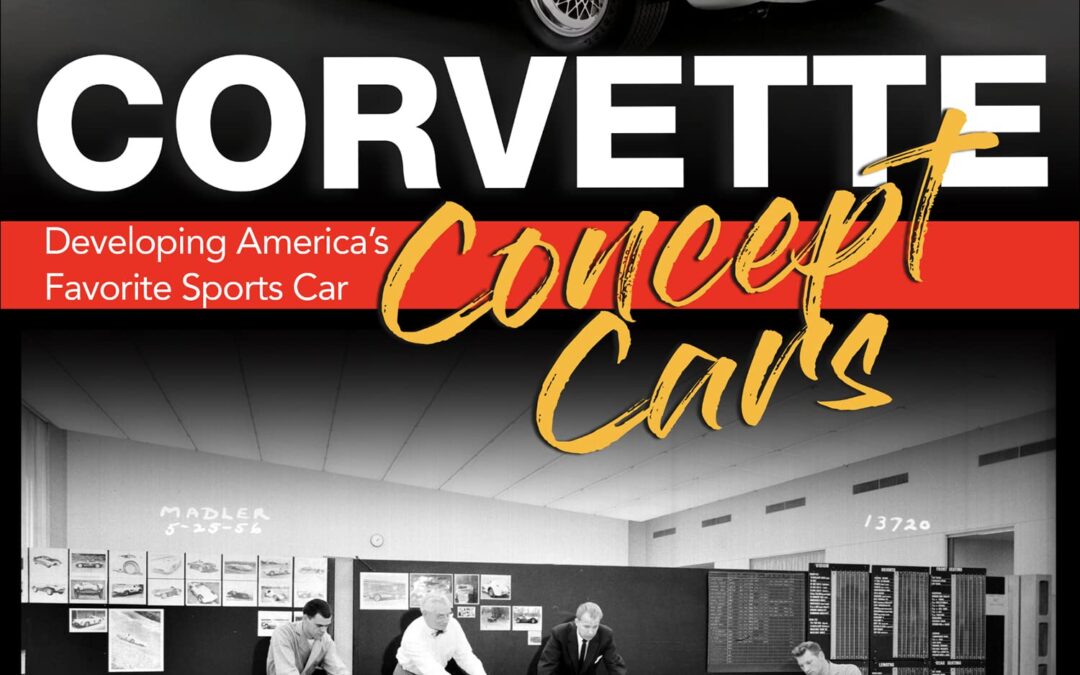
For more than a half century, the Corvette has been celebrated as “America’s sports car” by owners and enthusiasts. Since the first model rolled off the assembly line on June 29, 1953, it has been transformed time and again from a well-intentioned-but-underpowered boulevard cruiser into one of the most iconic sports cars of all time!
How did Harley Earl’s original vision for a two-seat sports car progress through eight distinct generations to become the car that we know and love today? Who were the visionaries responsible for advancing its form and function over the last 70 years? Also, why has the Corvette continued to find commercial success in an ever-changing marketplace when so many other automobiles have come and gone since its creation?
Corvette Concept Cars: Developing America’s Favorite Sports Car answers these questions by delving into the origins of the Chevrolet Corvette and of the countless designers, engineers, drivers, and dreamers responsible for its creation. It explores the personal histories of Corvette’s greatest visionaries (Harley Earl, Zora Arkus-Duntov, and Bill Mitchell) and tells how each of their fates were indelibly intertwined with the rich (and sometimes volatile) history of Chevrolet’s flagship sports car.
This book is an exploration of the Corvette concept cars from the earliest turnstile dream cars and purpose-built racers to the many unique mid-engined concept and research vehicles that preceded the creation of the current production model: the eighth-generation mid-engine Stingray.
Painstakingly researched and written by Corvette historian Scott Kolecki and packed with more than 350 incredible photographs, Corvette Concept Cars: Developing America’s Favorite Sports Car is the quintessential history of the evolution of the Chevrolet Corvette!
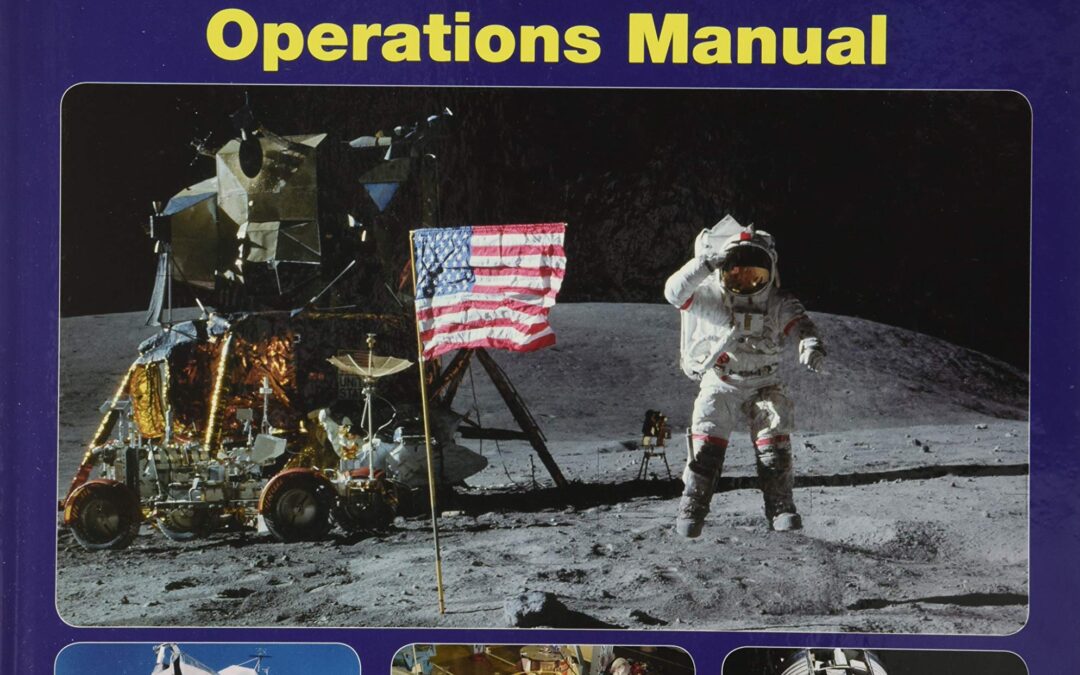
Published to coincide with the 50th anniversary of the first Moon landing by Apollo 11.
The story of Apollo has been told many times, but most accounts stop at the first landing. This book picks up where others have left off, and describes the five post-Apollo 11 Moon landings, defined as technical developments built upon engineering excellence. It was only through the robust design adopted when aerospace contractors first designed and built the Apollo spacecraft and the Lunar Module that successive evolutions were possible, taking lunar-landing operations far beyond what had first been envisaged.
This book is not intended to tell the full story of each mission, but rather to describe the technical development of spacecraft and equipment necessary to grow the capability from a single EVA
(‘moonwalk’) of less than three hours, to advanced missions where astronauts spent three full working days exploring their landing sites. With the aid of a Lunar Roving Vehicle, they collected a wide
variety of rocks and soil and left a range of instruments at the surface powered by a thermonuclear generator. As interest grows in humans returning to the Moon, 50 years on from those pioneering days of lunar exploration, we look again at what was accomplished at the dawn of the Space Age, spurred on by a political goal and developed as a tool for science.
The story of the Apollo Moon missions is an expression of those achievements.
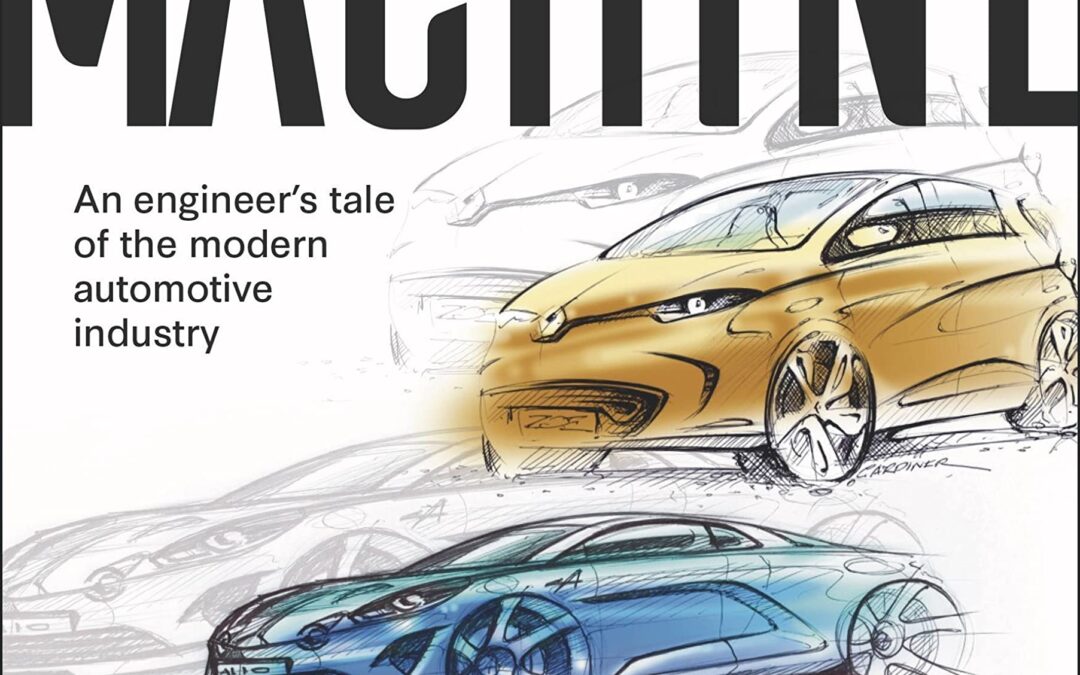
Inside the Machine tells the story of the modern car industry from the inside. What is it really like to work for the car-makers – the industrial giants that influence the daily lives of millions? How are mass-production cars really designed, engineered, and manufactured? What does it take to engineer a successful vehicle?
The story is told through the author’s own journey around the globe – starting as a young graduate engineer working for Nissan in the UK, to working for Nissan in Japan and finally for Renault in France as Chief Engineer of their ‘halo’ sports-car, designed to relaunch the Alpine brand.
It tells the behind-the-scenes story of three well-known vehicles, whose development teams were led by the author – the Nissan Qashqai, the Renault ZOE and finally the Alpine A110 – revealing some of the fascinating stories of how these vehicles came into being.
The book will seek to show the real work that goes on behind the glamour of the Motor Shows and the well-honed corporate press releases – work that is sometimes exciting, but often grindingly difficult.

Britain established the world’s first aircraft factory in 1909 after the Short brothers met up with the American Wright brothers and struck a deal. The industry expanded rapidly to rise to the challenge of World War One with such thoroughbreds as the Camel and the SE.5. The post-conflict slump proved to be difficult but classics such as the Moths, the Hart family and the Gladiator maintained Britain’s leadership. Another war loomed and iconic types such as the Hurricane, Lancaster, Mosquito, Spitfire and the Meteor jet appeared.
With the return of peace over 20 major manufacturers faced inevitable contraction. The misguided Bristol Brabazon airliner was a dead end but the superb de Havilland Comet and Vickers Viscount led the field. Canberras, Hunters, Lightnings and the V-bombers met the Cold War confrontation.
For the first time here is a readable, highly-illustrated, examination of the entire industry; its heritage and the changes it faces in the 21st century, both technical and political. The life and times of the 40 ‘big names’ from Airbus to Westland: aircraft, designers, factories, failures and successes, mergers and closures are all explained, supported by statistical tables and copious illustrations. Here is a celebration of a world class industry that remains at the cutting edge of excellence.

Valentino Rossi’s retirement brings down the curtain on an incredible career in the MotoGP motorcycle world championships.
With his nine titles, including seven in the premier class, he is widely regarded as the greatest motorcycle racer ever, and his 26 seasons of Grand Prix racing make him unique across both motorcycling and Formula 1. Rossi has been captivating fans since he won his first Grand Prix at the age of 17 and even in his final season, at the age of 42, he has been riding faster than ever.
In Valentino Rossi: All His Races, by top journalist Mat Oxley, each and every one of these races comes under the microscope, complete with perspectives about Rossi’s achievements, the controversies, his character, and analysis of his bikes. This is a Valentino Rossi book like no other, with photos by Henk Keulemans, who was shooting grand prix racing when Rossi’s father Graziano was winning races.
- Early days, from karting and minimoto bikes to a first GP win, on a 125 Aprilia in the 1996 Czech GP, then onwards to claim the 125cc world title in 1997.
- Moving up to the 250cc class in 1998 brought four consecutive end-of-season wins riding for Aprilia, followed by a decisive title in 1999 with nine victories.
- Grabbed by Honda to race its super-successful NSR500, Rossi graduated to the ‘class of kings’ for 2000, almost becoming champion that season — but the following year he sealed
- MotoGP, for 990cc four-stroke bikes, took over and Rossi immediately reigned supreme aboard his Honda RC211V, securing back-to-back titles in 2002 and 2003, before a surprise departure to uncompetitive Yamaha.
- Rossi rates his first year with Yamaha, 2004, as his best: defying expectation, he won first time out on the YZR-M1 and took a fourth successive title with nine wins.
- In six more seasons with Yamaha, 2005–10, Rossi collected three more championship crowns, his 2008 success especially sweet because it involved a fightback after two leaner years.
- Rossi’s move to Ducati looked to be an appetising all-Italian prospect but his two winless seasons there, 2011 and 2012, were disastrous.
- A return to Yamaha never quite recaptured his greatest glories, but Rossi was championship runner-up three times and came very close to another title in 2015.
Beautifully designed and comprehensively illustrated, this book is the complete record of Valentino Rossi’s remarkable career in motorcycle racing.
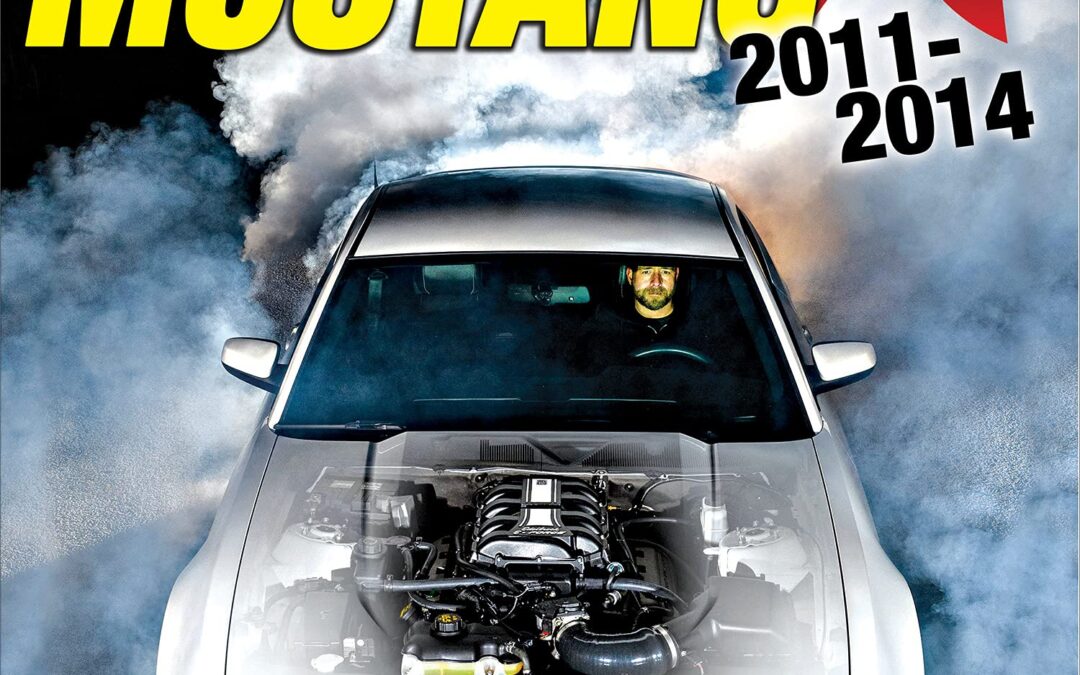
Maximize the potential of your 2011–2014 Mustang with this new book! The Ford Mustang has seen quite an evolution in its 50-plus years of existence. Times change, consumer demands change, and sometimes, you stop and wonder, “How did we get here?” Ford’s designers and its customers were thinking the same thing in the early 2000s. The evolution from the classic original design to the New Edge styling of the 1999–2004 models had some scratching their heads. Ford decided to take a bold turn back to the Mustang’s roots with the fifth-generation model, which made its debut for the 2005 model year and lasted through 2014. Echoing the Mustang fastback design of the 1960s, Ford inspired a path of retro design that the Camaro and Challenger followed shortly thereafter. The move proved incredibly popular with enthusiasts. Of course, with car enthusiasts, the immediate thought was, “How can we make this new Mustang even better?” The big news in 2011 was the introduction of the new 5.0-liter Coyote engine, which was a huge upgrade over the previous 4.6-liter engine. In Ford Mustang 2011–2014: How to Build and Modify, Mustang expert Wes Duenkel takes you through the entire car, system by system, to explore ways to get more performance out the last of the fifth-generation Mustangs. Included are chapters on engine modifications, brake and exhaust upgrades, power adders, chassis and suspension upgrades, cooling system modifications, and EFI and tuning tips. Wheels and tires, differentials, electronic upgrades, and more are also covered. The 2011–2014 Mustangs are finding their way into the affordable category at present with warranties expiring and acquisition costs being very reasonable. Of course, as with all generations of Mustang, there is a robust aftermarket to explore for performance parts and accessories. Ford Mustang 2011–2014: How to Build and Modify covers it all and will help you make your Mustang everything you want it to be.

In this readable and informative book, motoring expert Malcolm Bobbit tells the story of one of the most iconic cars in motoring history. Designed as affordable and practical transport for French farmers traveling on either bad roads or plowed fields, it also found its way into the fashionable quarters of Paris. The book shows how designers successfully achieved the specification for rugged and utilitarian design suitable for times of austerity while at the same time producing a truly classless car. The author explains the history of the car, conceived when Citroen was owned by the Michelin tire company, and how the idea evolved. He covers the ingenious design aspects of the car, including the corrugated metal bonnet, hammock seats, push-pull gear lever, and twin-cylinder air-cooled engine. Such was the success of the 2CV that it spawned variants such as the Dyane, Ami 6 and Ami 8, and the British-built Bijou, all of which are covered in the book. Illustrated with a unique collection of high-quality photographs and written by an authority on Citroen cars, this concise book tells you all you need to know about the famous 2CV.
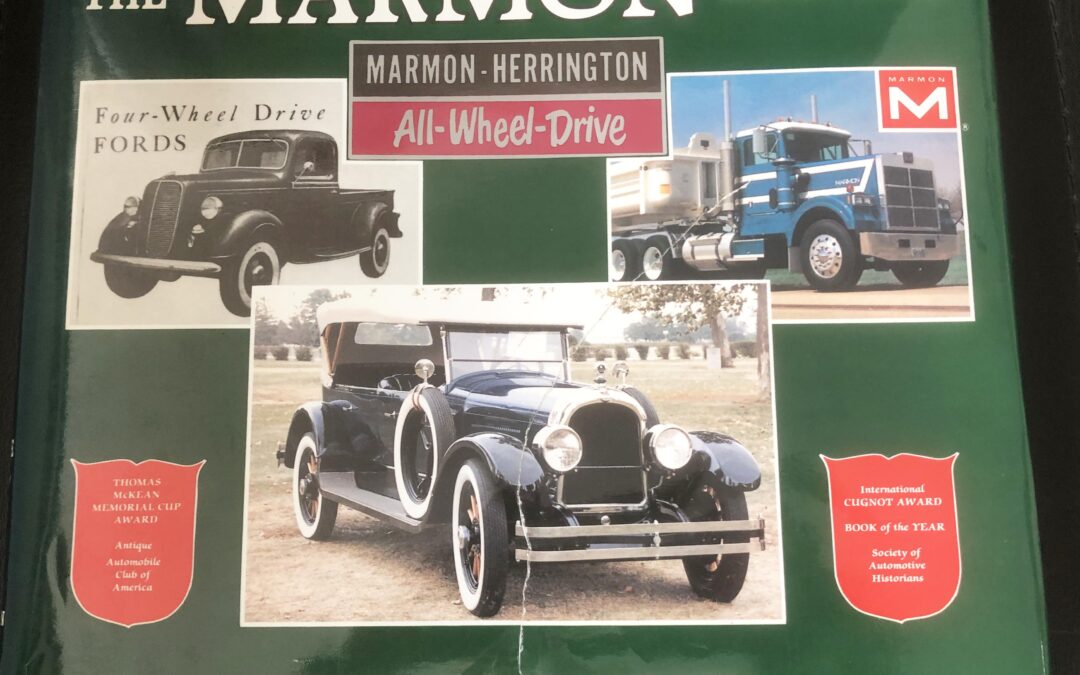
SIGNED to Phil Hill by the authors
The Marmon Heritage is one of the most unusual books published in recent times. It is at once history, technical manual and a paean of praise to the remarkably well designed and superbly engineered Marmon products. It is an enormously valuable treatment of the history of automotive engineering and of military heavy duty transport since the 1930’s. It is an outstanding achievement on its own terms and will have great appeal to engineers and students of mechanical design, technology and advertising.
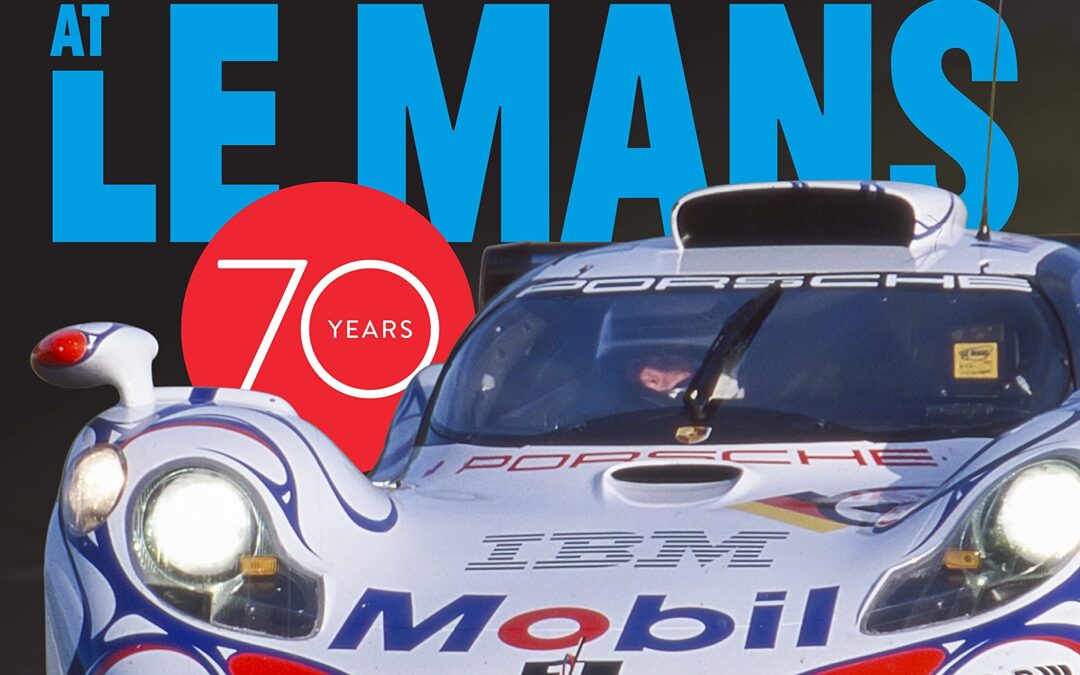
Packed with photography, narrative, and race results, Porsche at Le Mans is the definitive illustrated history of Porsche’s 70 years of competition in the world’s greatest motor race.
Porsche’s first visit to Le Mans came in 1951 with a streamlined 356 model, complete with aerodynamic wheel fairings. In a precursor to the reputation Porsche would establish over the next seven decades at the famous endurance race, the 356 ran like clockwork, beating the coveted record for the shortest time spent in the pits. Since that memorable debut, Porsche has won outright at Le Mans 19 times, more than any other marque, with a record series of seven consecutive victories from 1981 to 1987. This beautifully designed and extensively illustrated book is your definitive history of Porsche’s participation at La Sarthe, chronicling the exploits of both the works team cars and privateer entries.
Since 1951, Porsche has been represented at every single running of the 24 Hours. The models that have taken part comprise a roll call of great sports racing cars: 550 Spyder, 718 RSK, 904, 906, 907, 908, 910, 917, 936, 935, 956, 962, and GT1—right up to the hybrid 919 that won from 2015 through 2017. To this daunting list can be added the ubiquitous 911, the privateer’s choice for the race (in 1971, a year that saw a record number of Porsches take part, 19 of the 33 Porsches in the race were 911s). And hundreds of them are depicted in historical photos.
In addition to the legendary cars, you will bear witness to the exploits of Porsche drivers, a veritable murderer’s row of motorsport greats, including Derek Bell, Herbert Muller, Helio Castroneves, Mario Andretti, Jacky Ickx, Jo Siffert, Jochen Rindt, Mark Donohue, and Vic Elford, to name just a few.
Meticulously compiled by noted Porsche historian Glen Smale, Porsche at Le Mans is the most exhaustive celebration of the subject, created with full access to the Porsche archives in Stuttgart. The resulting tome is a treasure trove of history, photographs, data, and technical information, indispensable to any serious Porsche or motorsport enthusiast.
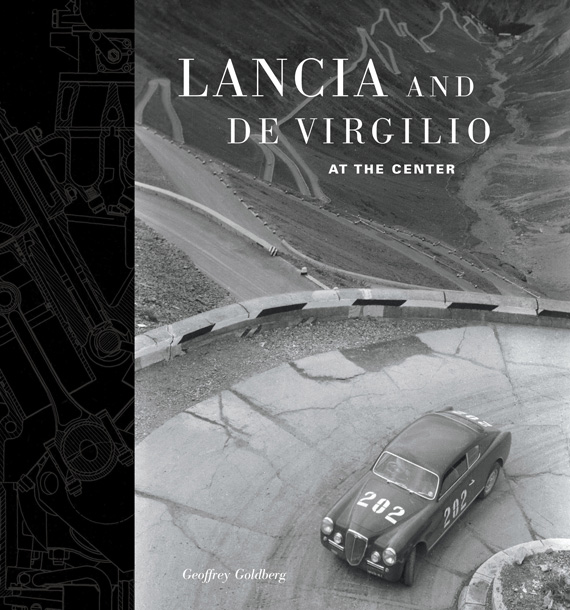
In the years following the Second World War, Lancia was the most innovative automotive company in Italy, if not in the world. The Lancia cars were technically advanced, with an elegant and competitive design on the track. For more than four decades, Francesco de Virgilio was one of the primary figures in the history of Lancia. De Virgilio entered the company as a young engineer in 1939, becoming a member of the Lancia family, when he married the niece of the founder Vincenzo Lancia, in 1947. In Lancia and de Virgilio, the author Geoffrey Goldberg examines the life and career of De Virgilio from multiple perspectives. Drawing on a large number of original documents, technical drawings and photographs from the archives of the De Virgilio family, Goldberg reveals the essential role of De Virgilio in the projects that defined Lancia during its best years in the 1940s and 50s. These include the development of the first production V6 engine, launching and improvement of the Lancia Aurelia, and the management of the short racing program of the company, which produced the classic D50 Formula One car. In addition to engineering and competitions, De Virgilio was directly involved in the events that effected the management and position of Lancia in the Italian automotive industry. In 1955, the family released its control of the company, leading to its eventual acquisition by Fiat in 1969. Through all these upheavals, De Virgilio continued to experiment and innovate, working on multiple projects, from diesel engines for trucks to the first versions of the rally car Stratos in the 1970s. Whatever the assignment, his persistent search for excellence remained a constant element defining Lancia, up to his departure from the company in 1975. Despite his technical successes and his popularity within the company, De Virgil’s contributions have been widely neglected to date.
Produced with the support of the RevS Institute for Automotive Research, Lancia and de Virgilio is the product of more than six years of meticulous research. The book is illustrated with hundreds of unpublished photographs that depict the images of Francesco de Virgilio at work, on the track and at home with his family, as well as dozens of drawings, projects and other finds. In addition to this abundance of details and information, the book, also captures the vibrant spirit of Italian, culture and society during the post-war period. Lancia and de Virgilio provides unique insight into both automotive and social history. The book was greatly appreciated by enthusiasts: it won several awards, including the Cugnot Award of the Society of Auto Historians for the best book of the year. It was also reviewed by the New York Times and the Republic, a rather exceptional event for a book on a company and its history already seventy years in the past.
This limited edition reprint is an opportunity not to be missed for those who did not secure the first edition in 2014.
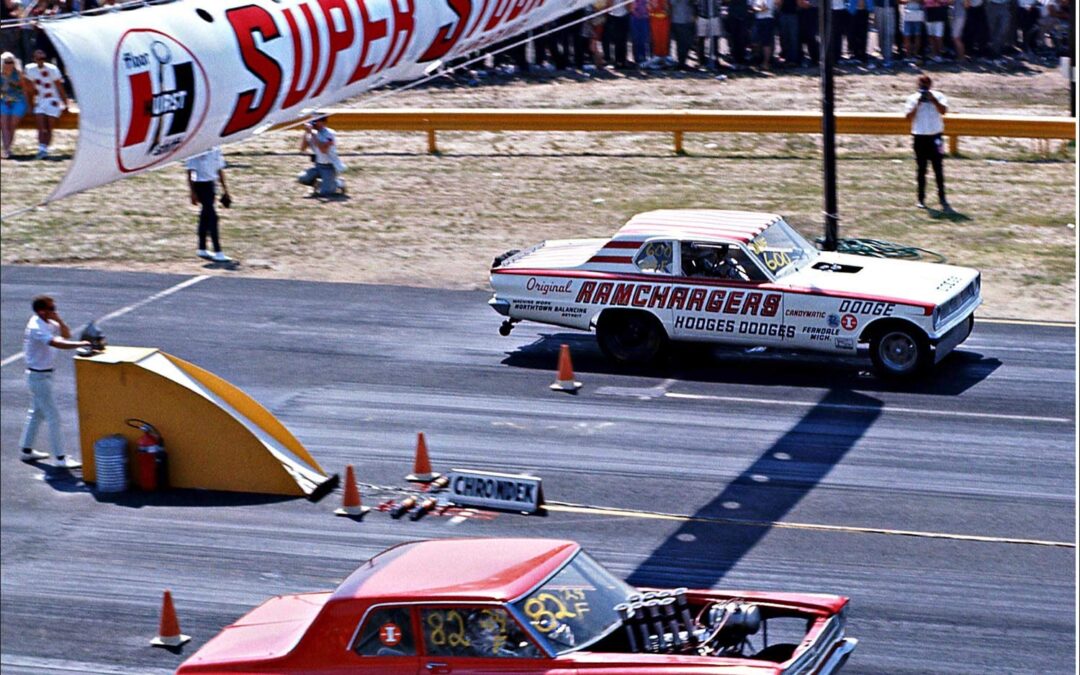
he 1960s were a fascinating decade on the race scene. Relive the memories today through this wonderful new book.
Drag racing has a long and storied history. Many have said that the first drag race happened shortly after the second car was made. While that may or may not be true, racing prior to World War II was mostly centered around dry-lake activities and top-speed runs. After the war, drag racing became organized with the formation of the NHRA, and during the 1950s, many tracks were built across America to accommodate the racers. Technology in the 1950s centered on the manufacturers updating old flathead designs into newer overhead-valve designs, and the horsepower race really started to heat up.
In many forms of racing, the 1960s brought technological evolution. The decade began with big engines in even bigger stock chassis and ended with purpose-built race-only chassis, fiberglass bodies, fuel injection, nitro methane, and blowers. Quarter-mile times that were in the 13-second range in the beginning of the decade were in the 7-second range by the end. New classes were formed, dedicated cars were built for them, and many racers themselves became recognized names in the sports landscape.
In Drag Racing in the 60s: The Evolution in Race Car Technology, veteran author Doug Boyce takes you on a ride through the entire decade from a technological point of view rather than a results-based one. Covered are all the classes, including Super Stocks, Altered Wheelbase cars (which led to Funny Cars), Top Fuelers, Gassers, and more.
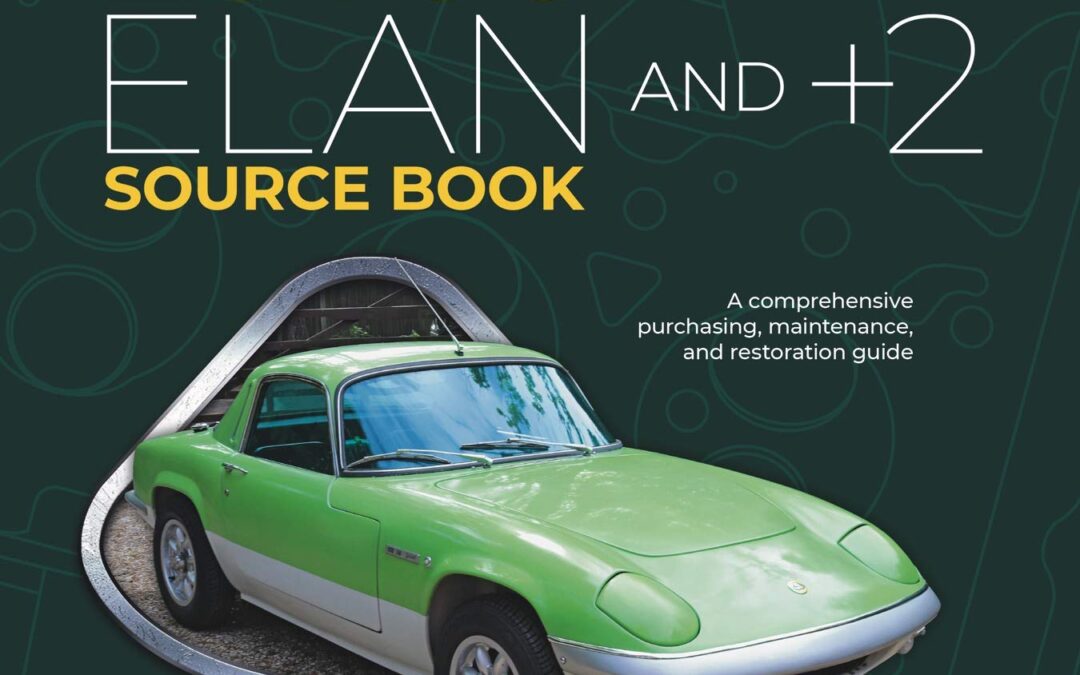
The Lotus Elan was Colin Chapman and Lotus’ first affordable road car, produced from 1962 and, along with its larger +2 variant, until 1974. As a replacement for the expensive Lotus Elite, the Elan and +2 were both successful sports cars, which carried Lotus through the 1960s and into the 1970s.
Starting with a brief history of Lotus and the Elan, Lotus Elan and +2 Source Book provides a detailed originality guide to the Elan and +2, identifying the design changes Lotus made to the models through their lifetimes. An ‘owner’s guide’ provides detailed information on owning and maintaining the cars in tip-top condition, and gives details of common faults and upgrades. The restoration guide gives any potential restorer the information to carry out the tasks needed to bring one of the these cars back from the dead.
With anecdotes and experiences from current and previous owners of Elans and +2’s, along with many colour photographs the book provides a valuable insight into owning running and racing these iconic cars.

Vauxhalls held a special place in the British motoring scene of the mid-twentieth century. Solid, reliable and respectable, they were carefully designed to meet the expectations of buyers and also to meet the global ambitions of General Motors in America, the company that owned the Vauxhall marque.
Sometimes American influence went too far, but at other times it allowed Vauxhall to keep a step ahead of its competitors. Vauxhall Cars of the 1960s and 1970s covers just over two decades of Vauxhall history that saw Vauxhall producing a succession of fondly remembered models, including some genuine classics. It opens with the two new models for 1957, the F-series Victor and PA-series Velox and Cresta, and ends with the last FE-series Victor in 1978.
By then, other new models had come along, but these were a different breed of car that originated with Opel in Germany rather than with Vauxhall itself. The period began as Vauxhall expanded from making one basic range with two different engines to making two separate ranges that were free to develop individually. The smaller of these ranges was the medium-sized Victor, and the larger provided the Velox and its luxury derivative, the Cresta.
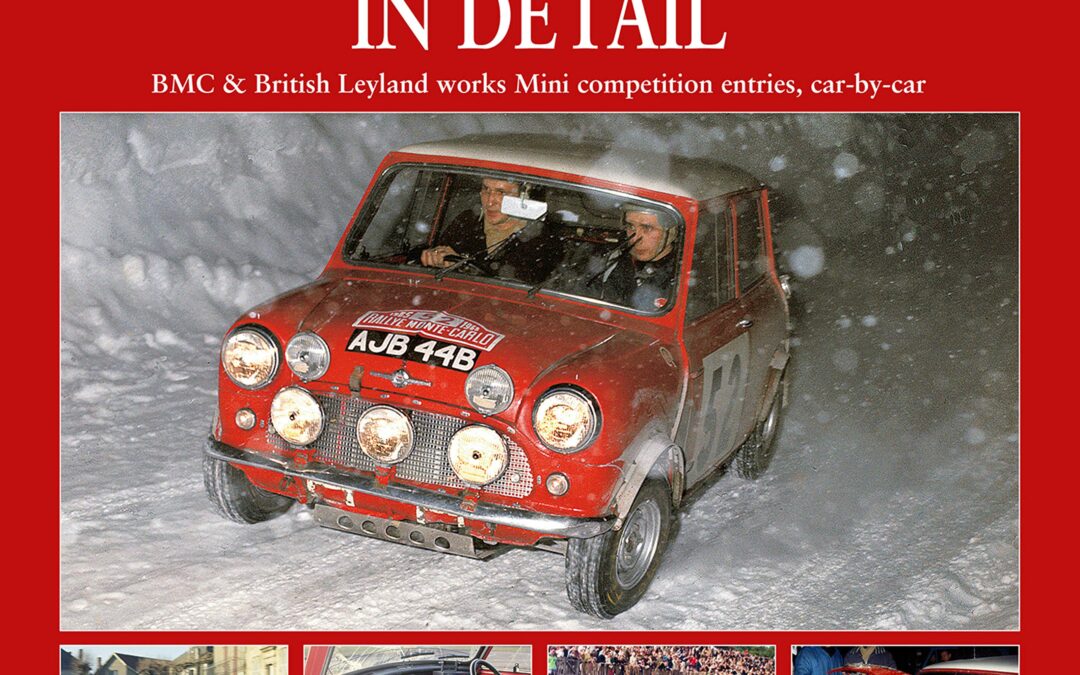
The works Minis had a long and distinguished competition history between 1959 and 1970, when British Leyland bosses closed the Abingdon Competition Department. The car started its competition career chasing class awards with the diminutive 850cc Mini, but once race car designer John Cooper persuaded BMC that they should build a hot version, the Mini Cooper was born and things moved up a gear.
With the introduction of the Mini Cooper S, the car soon became a world beater. Winning the 1964 Monte Carlo Rally in the hands of Paddy Hopkirk was a watershed moment which the Abingdon team repeated three times. During that 11-year period, 77 works Minis were built, competing in more than 300 events, most of them international rallies. The 1969 season, when the works Minis went racing, is also covered, along with the rallycross events.
Works Minis in Detail covers each one of those 77 cars which, in their distinctive red and white paintwork, were a force be reckoned with wherever they competed. Build details of every car are provided, drawn from factory build sheets, with information also on when cars were reshelled and identities swapped. The details of the events entered and the drivers are the result of analysing hundreds of contemporary race and rally reports.
The result is the most in-depth study of the works Minis ever published, made possible by years of research by Robert Young, a lifelong Mini enthusiast. As the Mini Cooper Register’s ex-works registrar, club chairman and for many years archivist, he is well placed to write with authority. A proud owner himself, he has intimate knowledge of the little red cars.

What really happened at British Leyland (BL)? Was it ‘just’ the cars, or were other factors vital to the story? Who really was to blame for BL and MG Rover’s death?
The ‘truth’ about BL is deeper than its cars – were ultra- Left-wing plots to topple BL and British society real? Did secret deals and political intrigue really exist? Was it Labour or Conservative powers who ‘killed’ BL, or was it BL itself? How was it that BL’s design genius was hobbled?
Author Lance Cole lifts the bonnet on BL and presents a forensic yet easy to read new analysis in a story of BL, its cars, and the era of their motoring as powers on the political Left and Right waged war, sometimes even with themselves.
Here is a book about cars and more, a conversation on all things BL: this is a new account of a classic British story told across a trail of evidence in a British industrial and political drama.
Many mistakes made BL, but some of the cars were superb, the designs of genius, the engineering excellent; it is just that we have either forgotten, or been brainwashed into believing the worst.
In a BL book like no other, written by a classic car fanatic with a background in industrial design, automotive, and wider journalism, this story lifts the lid on BL’s cars and more. The author also adds inside knowledge from time working in the motor industry.
Lance Cole tells the deeper BL story across the era of its greatest successes and its biggest failures.






